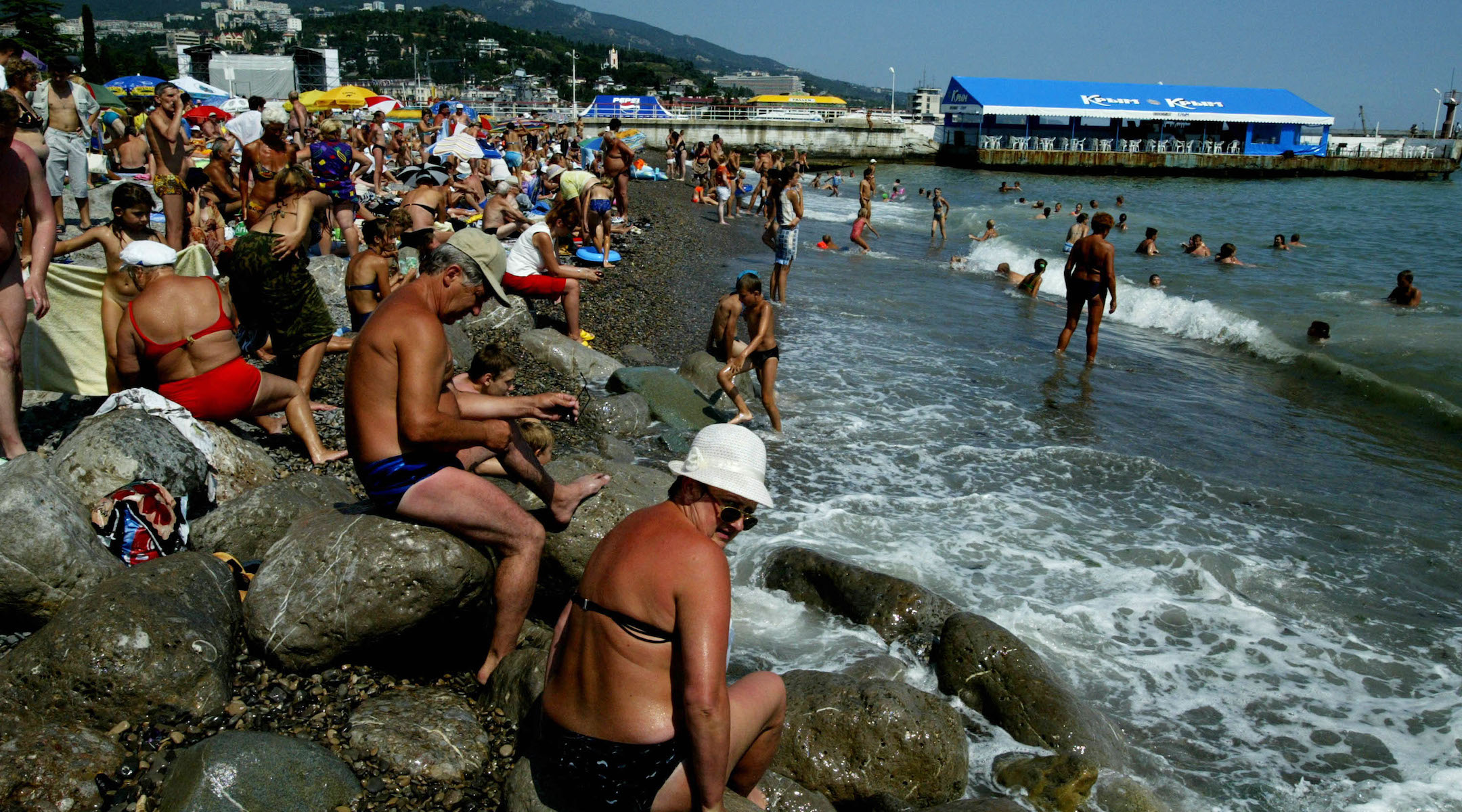Even though he’s only 19, Sergei Boruchovich can pride himself on being a veteran of Jewish life in his native Simferopol.
A coordinator of religious programs at the Ner Tamid congregation, he has four years of experience in a rebuilt Jewish community that is just 10 years old.
A student of journalism at a local university, Boruchovich leads weekly services at the Reform synagogue and is responsible for a number of youth programs.
“People are showing a growing interest in Judaism,” he says.”This is especially true with the older generation who have some Jewish childhood memories. But the movement is not limited to them.”
To reach out to younger Jews, the community resorts to various marketing techniques. These range from telephone calls to homes of families with Jewish-sounding names and children of school age, to renting popular nightclubs to celebrate Jewish holidays.
“How else could you reach out to those who are not yet part of the community?” Boruchovich asked.
Boruchovich’s synagogue recently received its first Torah scroll as a gift from its sister congregation Beth Emet in Evanston, Ill.
The weekly minyan is still made up mainly of people older than 60, but an increasing number of young people are attracted to Jewish programs through the synagogue’s youth club.
Those not yet familiar with the Jewish calendar may not know in September what holiday will be in March, Boruchovich says.
“We are trying not to overwhelm them with too much information. We teach them step by step,” he says. “At the end of the day, we are working for the future, so that there will be a future.”
In spite of an unfavorable demographic situation and the economic challenges of a young market economy, the future for the Jews on Ukraine’s Crimean peninsula, where Simferopol is located, looks better now than it has in the last 80 years.
The Crimea is an autonomous republic inside Ukraine, slightly larger than Israel, with a population of 2.4 million. A popular resort area, the region historically has been rife with ethnic controversy. It now is predominantly Russian, with substantial Muslim Tatar and Ukrainian populations.
Jewish roots in the Crimea run deep. The first Jews settled here in the second century B.C.E., in what was then the northeastern corner of the Roman Empire, and were active participants in the region’s economic life.
During the medieval era, the area was under Muslim influence. In the late 18th century, the Crimea was incorporated into the Russian Empire.
Throughout most of its history, the area drew significant numbers of Jews from the Mediterranean and Eastern Europe. Its Jewish population was comprised of Ashkenazi and Sephardi Jews as well as Tatar-speaking Crimean Jews, known as Krymchaks.
In the 1930s, the region became a playground for social experiments by Jewish Bolsheviks. Jewish collective farms in the Crimea attracted more settlers than the Soviet-created “Jewish homeland” of Birobidzhan — 86 such farms were created in Crimea by 1941 — but protests from the local population halted plans to settle more Jews in the Crimea.
When Crimea came under German occupation in October 1941, the area had a Jewish population of 60,000 to 70,000. They were murdered by the Nazis and their local collaborators in less than six months. In April 1942, the Crimean Peninsula was declared “Judenfrei” — cleansed of Jews.
But Jews returned immediately after the war, and many Jews from other parts of the Soviet Union moved to the Crimea in the last decades of communism.
Despite ongoing Jewish emigration from the former Soviet Union, the size of the community has stabilized in the last few years at about 20,000, according to Anatoly Gendin, Simferopol’s Jewish leader and chairman of the Association of Jewish Organizations and Communities of Crimea.
In the last decade, Jewish life reawakened in a dozen Crimean towns. Orthodox and Reform synagogues, social services for the elderly, a Jewish day school, summer camps and youth programs operate in the area with overseas funds and some limited local backing.
The community monthly newsletter, Sholem, is in its twelfth year and reaches 10,000 households across the peninsula.
No trace of state anti-Semitism is left today, and Jews have fully integrated into the region’s social, economic and political life. This spring, a Jew was elected speaker of the region’s legislature.
Anatoly Gendin, the community leader, says anti-Semitism still exists at the grass-roots level and that there are newspapers in the area that publish anti-Semitic articles.
One such paper, the Russian Crimea, was banned by a court earlier this year for inciting ethnic and religious hatred. The case against the paper was initiated by the Jewish community.
The community is not shy to speak out on issues of concern. Last month, the Association of Jewish Organizations of Crimea published a strong-worded statement in support of Israeli actions against Palestinian terrorism.
Tamara Lyubashkina, 45 and a native of Crimea, said she had grown up surrounded by anti-Semitism and had learned to hide her Jewishness.
“I married a non-Jew on purpose, so that my children wouldn’t suffer the way I had suffered,” she said. “I wouldn’t do that today, when I see that being Jewish is so much a positive thing.”
JTA has documented Jewish history in real-time for over a century. Keep our journalism strong by joining us in supporting independent, award-winning reporting.
The Archive of the Jewish Telegraphic Agency includes articles published from 1923 to 2008. Archive stories reflect the journalistic standards and practices of the time they were published.




